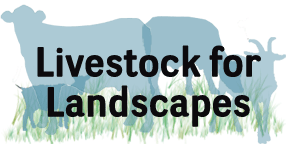2010 Lessons Learned:
Trained Cattle Are A Useful Tool
As in 2009, we found our trainees adding many new weeds to their diets and untrained animals learned to do the same from the trainees.
More Animals Are Required to Accomplish Our Goals
Our test pastures demonstrated that 100 cow calf pairs plus bulls managed in small pastures require 2 acres per day, given the kind of vegetation we had in 2010. In our discussions with our partners we have arrived at a number of 200 - 300 for the next grazing season.
Mob Grazing Presents Significant Challenges Beyond Simply Managing the Animals.
When I discussed mob grazing with our partners, a variety of hurdles came up. Some were logistical, some were political, some were a result of how grazing has been managed in this area both historically, and since the City and County began acquiring open space, and most of them were a mix of all three. Those challenges include: Water, concerns from the public and from internal staff that cattle will be mismanaged and will over graze, and historic grazing management that is difficult to adjust to mob grazing requirements. This last hurdle means that, in essence, there may not be enough cattle in Boulder County to make mob grazing viable long-term. Therefore the next two years I will be focusing on helping ranchers and land managers consider solutions to address vegetation management goals in a targeted way.
Download the 2010 report here (1.3MB) |


